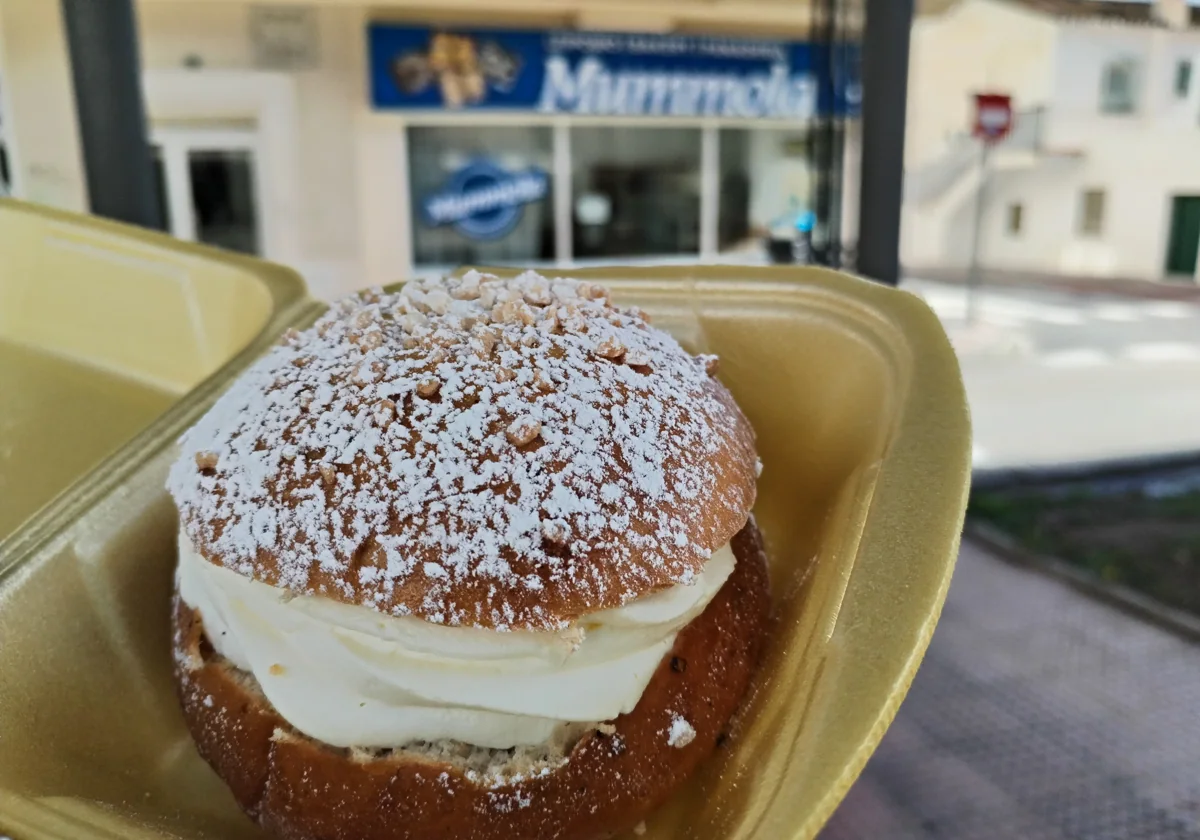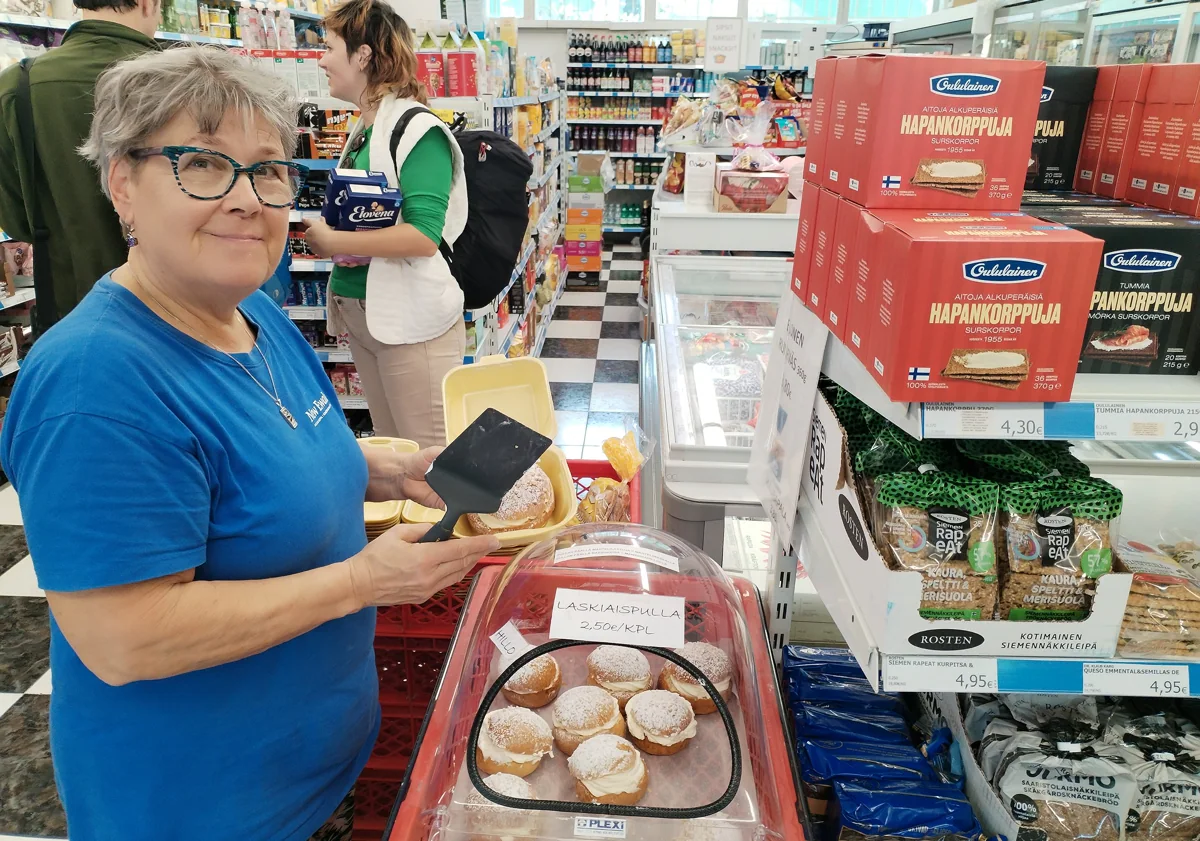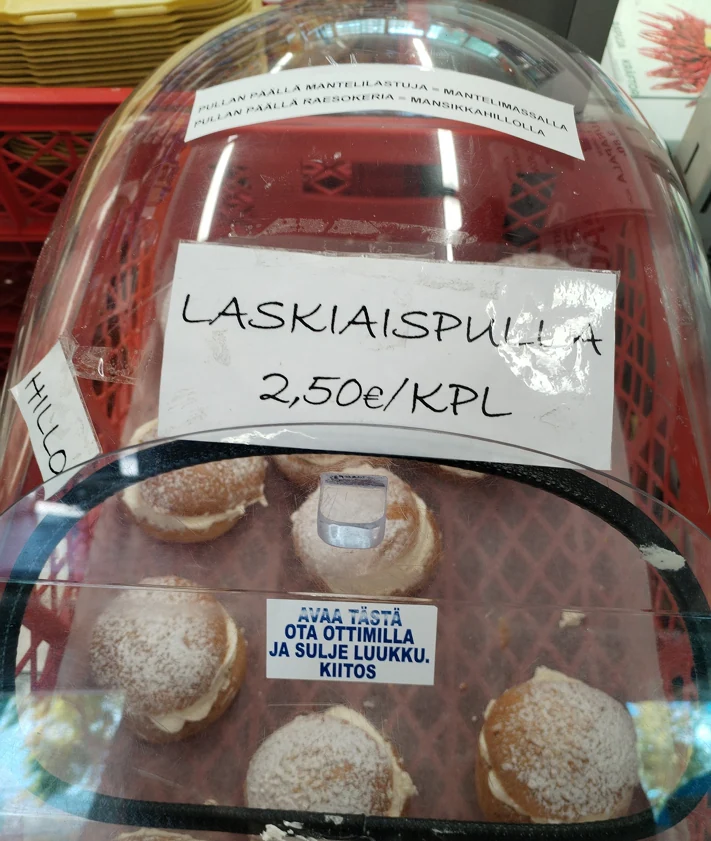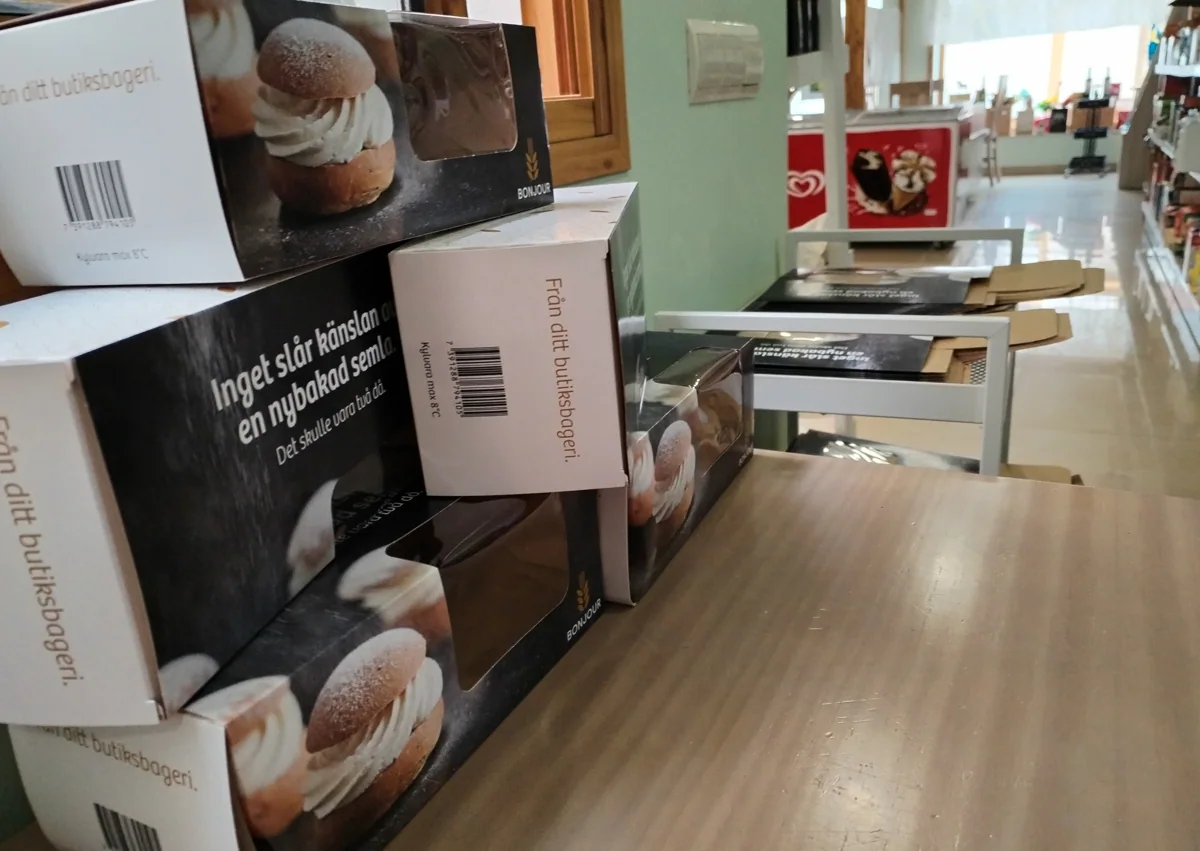

Sections
Highlight

Alekk M. Saanders
Monday, 12 February 2024
Shrove Tuesday, or Mardi Gras, is the last day to indulge in rich, fatty food before the fasting period of Lent. In countries such as the UK the day is also known as Pancake Day because of the annual culinary tradition. But in Finland, Sweden, Denmark, Norway, the Baltic States and Iceland, sweet buns with cardamom, whipped cream and almond paste are a Shrove Tuesday tradition. This alternative to pancakes can also be found on the Costa del Sol, albeir only in towns with larger communities of residents from northern European countries.
Laskiainen is a celebration with Finnish origins, which includes both pagan and ecclesiastic traditions, and is often described as a "mid-winter sliding festival". The sweet traditions of Laskiainen can be found in a bakery in Fuengirola, the town that is home to the biggest overseas community of Finns in the world.
Related article
“Many of the Finnish Laskiainen traditions are probably based on an old work feast. It was the time when women stopped the winter tasks of working linen, wool and hemp and spinning them into yarn. Among the old Laskiainen traditions that have survived are sledding down a hill and riding a sled around a pole. For example, those who slid the farthest were going to get the best crop of linen. Not surprisingly, the festival is named after the act of sliding or sledding downhill, 'laskea'. Although Laskiainen has been integrated into Christian customs as the beginning of Lent in both in Finland and Estonia, it remains a holiday of saying goodbye to the dark winter and waiting for spring as well as... eating so-called laskiaispullas,” Marja-Leena Pesonen told SUR in English.



In the past, this dessert was simply a bun with no filling and was served in warm milk in a deep bowl. In the 19th century, almond paste was added to the bun. In wasn't until the 20th century that Finnish confectioners added whipped cream or spices, including the most popular in Finland, cardamom, which is now considered the most important ingredient.
Marja-Leena Pesonen
Laskiaispullas are baked on the Costa del Sol at the Leipomo Mummola bakery, located in Los Boliches, Fuengirola.
"Our desserts could be called Andalusian because all the ingredients we use to make the buns are from this region, with the exception of the ground cardamom," said Marja-Leena. "We use organic flour from Coín and we buy almonds from farmers in the Sierra de las Nieves to grind here. Eggs and butter also come from local suppliers. Typical Finnish buns include strawberry or raspberry jams. It is the same in Norway and Denmark, where these buns are called 'fastelavnsbolle'," added Marja-Leena. In Fuengirola, laskiaispullas are sold both in the bakery and in the Finnish shop New Ewald's opposite the bakery.
Laskiaispullas came to Finland from Sweden. That is why the buns spread originally only to the Swedish-speaking coastal regions of Finland. In Sweden, this bun is mostly known as a 'semla' - or 'semlor' in plural. The delicacy is traditionally served between Christmas and Easter. The aromatic buns, flavoured with cardamom and sometimes cinnamon, are filled with a rich almond paste and whipped vanilla cream without any jam.
The semla has a long history and many curious stories. It is believed that Sweden borrowed the concept of semlor from a similar tradition in Germany. In addition, almost every Swede will tell you about the possible reason for the sudden death of Swedish King Adolf Fredrik. Legend has it that in February 1771, the monarch died of digestive problems after eating 14 buns that had been soaked in warm milk - the traditional way of eating them. However, according to popular myth, the king ate semlor after a royal dinner consisting of sauerkraut, turnips, caviar, smoked herring (or even lobster) and champagne.
Semlors have become something of an obsession for the Swedish people. Now they are not only served on Shrove Tuesday, they sometimes appear in bakeries before Christmas and throughout Lent. Typical Swedish buns can also be found on the other side of the Costa del Sol, in Nerja, where a large number of Swedish residents and tourists live and visit. In the town there are two places where you can try them - at a bakery/café and a shop. The owner of the Swedish shop Hemlängtan, Eva Ruiz, is hosting coffee breaks with semlor every Tuesday, starting on 13 February.



"On 'Fettisdag' [Fat Tuesday in Swedish], everyone in Sweden eats this cherished and legendary delicacy. Over time, this tradition has transformed into something more commonplace. It has taken the form of Swedes eating semla every Tuesday from Shrove Tuesday to Easter. Swedes buy about five million semlors - and who knows how many of them are baked at home. We use Swedish buns, cut the tops off and fill them with almond paste, which we then cover with whipped cream made in Sweden. Semla is usually served with coffee or tea or eaten on its own. Some people prefer to eat it the old-fashioned way - in a bowl with hot milk. I would like to emphasise that many people like this flavour, not only Swedes, but also visitors from the Baltic States and even local Spaniards," said Eva Ruiz.
Eva Ruiz
Björn Romani makes semlor from scratch in his bakery Nybakat, using mostly local products. He started baking semlor almost a month ago and will continue until Easter. Every day he sells hundreds of semlor along the Andalusian coast, especially in Marbella. His secret to the special richer flavour of semlor is to add coarser almond crumbs to the almond paste, produced in Sweden but from Spanish almonds.
Publicidad
Publicidad
Publicidad
Publicidad
Esta funcionalidad es exclusiva para registrados.
Reporta un error en esta noticia

Debido a un error no hemos podido dar de alta tu suscripción.
Por favor, ponte en contacto con Atención al Cliente.

¡Bienvenido a SURINENGLISH!

Tu suscripción con Google se ha realizado correctamente, pero ya tenías otra suscripción activa en SURINENGLISH.
Déjanos tus datos y nos pondremos en contacto contigo para analizar tu caso

¡Tu suscripción con Google se ha realizado correctamente!
La compra se ha asociado al siguiente email
Comentar es una ventaja exclusiva para registrados
¿Ya eres registrado?
Inicia sesiónNecesitas ser suscriptor para poder votar.